The return of silk masks
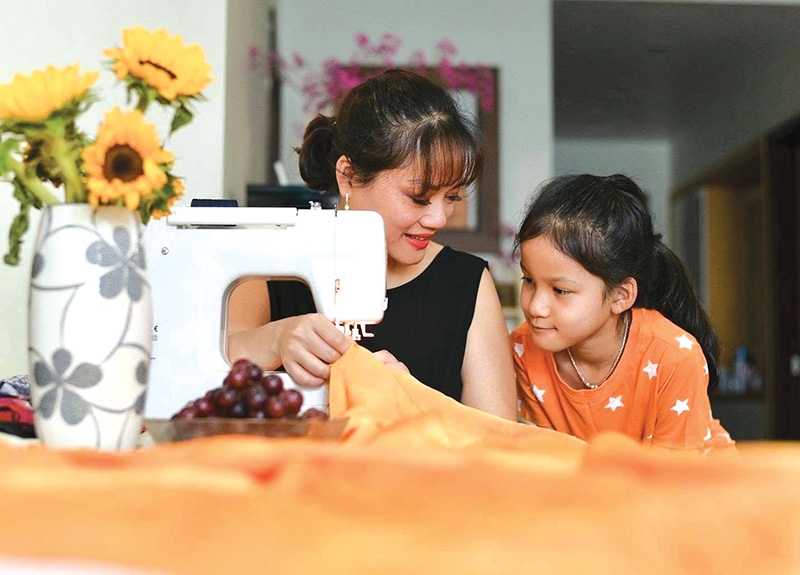 |
| The return of silk masks |
Most of the cloth masks on the market are made from familiar materials such as cotton. Why did you come up with the idea of making silk masks that are thin, soft, and of high quality?
The idea of making silk masks was not mine but my 8-year-old daughter’s. She has been dreaming of becoming a fashion designer for the past three years, so she is always interested in fabrics such as silks. I have also sent my children to the silk weaving village in Ha Tay to visit the weaving factory, where they met the famous silk weaver Phan Thi Thuan, listening to his explanations about the process of incubating silk weaving and the benefits of the material to the skin. So, when medical masks became scarce and people were encouraged to use cloth masks, she came up with the idea of using silk as a material for masks.
People often think that masks are only used when they are at polluted places, and then throw them away. Therefore, the material used to make masks will usually be disposable items such as the ones for medical masks or other popular materials such as cotton. But the COVID-19 pandemic caused people to wear masks all the time when going out and going to work. Common materials have disadvantages such as with regards to temperature and hard surfaces that can cause skin damage. So, her idea is indeed very interesting.
For the first time, I looked at my daughter as a future fashion designer instead of thinking it was just a wish that children usually forget over time. So, my two children and I discussed and divided the work, and then we started sewing masks for everyone in the house, relatives, and friends. She gave the masks a name by combining her and her grandmother’s name because her grandmother also had the dream of becoming a fashion designer.
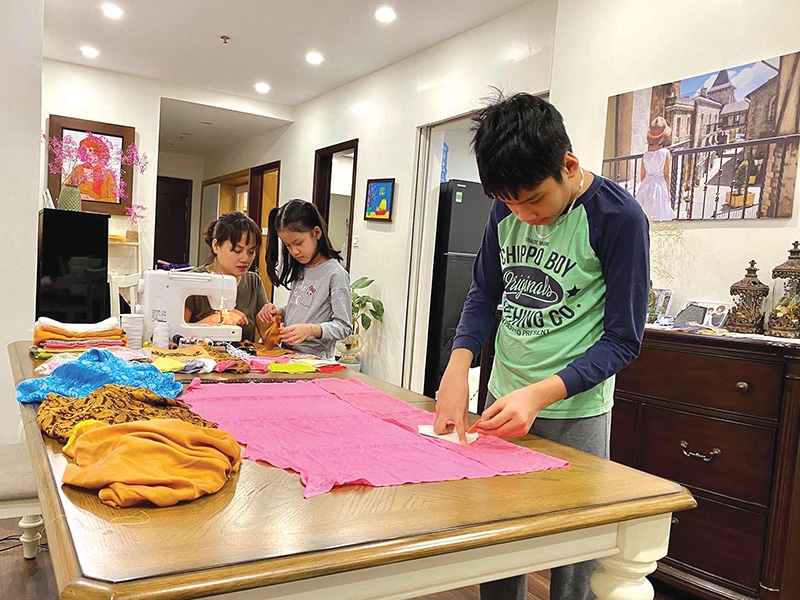 |
According to your assessment, what made silk masks more special than other types of cloth masks on the market?
Silk is made from silkworm cocoons that contain a variety of skin-friendly amino acids and proteins so it does not irritate but moisturises and softens the skin. Silk also has natural antimicrobial properties and regulates the temperature so it feels cool in the summer and warm in the winter. Silk has long been known as the most expensive and luxurious material. Throughout the world and in Vietnam, silk represents elegance. In the past, silk was only affordable for the aristocracy. Today, silk has fortunately also become available for many other people.
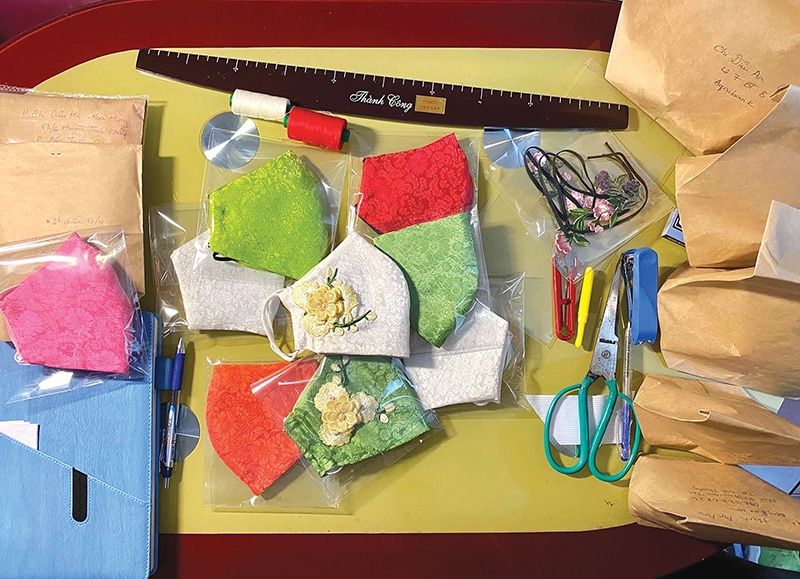 |
From which traditional silk weaving village are you sourcing your material and why did you choose it?
Between bags of materials and modern motifs, my daughter and I chose silk with traditional patterns, woven by the Nha Xa handicraft village in Ha Nam province. This village is famous for its traditional weaving method which gives the masks a very unique feel. Some of my friends who are fashion designers or models are very interested in my Nha Xa silk masks. For me, my work means to do something together with my loved ones and bond with my family. You could say, each of us did one stitch according to one’s own strength. The seams are not perfect as we are not professionals but we just hope when people hold or wear it, they will feel positive energy. Though foreigners usually do not like wearing masks, they seem to like our silk masks.
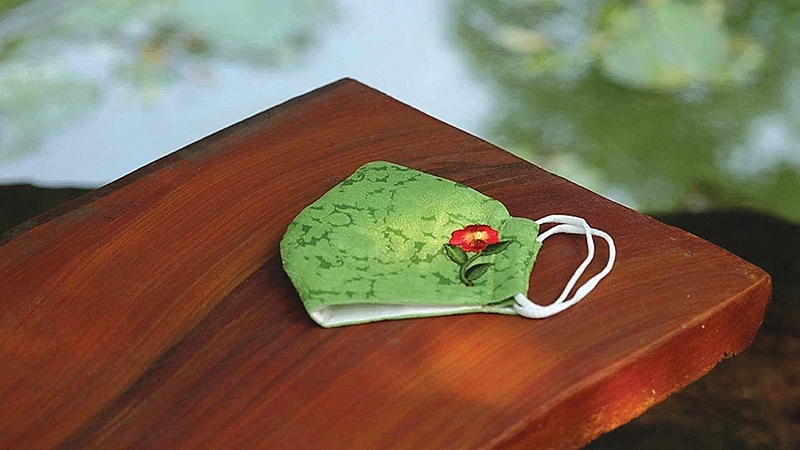 |
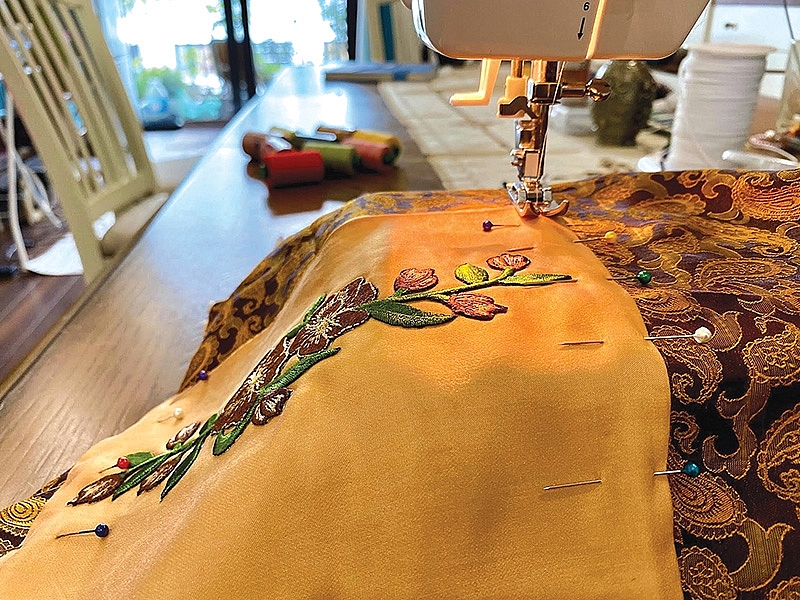 |
Do you plan to expand your operations instead of working on a small scale?
With quite a lot of orders, we are receiving a lot of help from friends. In a particular case, we also received the help of a famous nanoscientist from the Vietnam Academy of Science and Technology. When we offered 10 homemade silk masks to support the frontline doctors against the pandemic, she was the buyer. She really liked the idea of a pretty silk mask with traditional village patterns so she decided to help me upgrade my masks by using antibacterial silver nanotechnology. She impregnated and fixed silver nanoparticles onto a pad and put it on a silk mask, thereby making the mask much stronger and durable. With her support, we have improved our masks from two to three layers, with additional space to add nanosilver pads or activated carbon pads according to the user’s liking.
In your opinion, how does your business support Vietnam’s traditional silk production?
Modern life with the popularity of social networks makes everything hasty and urgent. The internet quickly connects us with every one thing but sometimes alienates us from ourselves, our roots, and our cultural identity. The silk masks are not only beautiful and good for the skin but also help people to experience the traditional silk material and contribute to the prosperity and renown of Vietnamese silk villages. Not only do the artisans get more jobs, but young people who have been living in the city for a long time can return to work in their homeland.
If my daughter still wants to become a fashion designer in the future, I will guide her towards Vietnamese silk. She has now gathered a group of little friends with similar fashion design interests. The children will plan a separate “silk road” to explore the Vietnamese silk world. My job is to contact artisans in silk weaving villages in Ha Nam, Ha Tay, Thai Binh, Lam Dong, and others, where the children can speak to the artisans directly. For me, the most important thing is to accompany my daughter’s dream and witness her growth.
What the stars mean:
★ Poor ★ ★ Promising ★★★ Good ★★★★ Very good ★★★★★ Exceptional
Related Contents
Latest News
More News
- Pan Pacific Hanoi kicks off 2026 art awards celebrating young and disabled artists (November 06, 2025 | 18:25)
- PREP AI Language Fair 2025 highlights AI-powered language learning (November 03, 2025 | 09:00)
- Hanoi strengthens rabies control and supports transition of dog and cat meat trade (October 28, 2025 | 18:09)
- World-famous Gaia Earth installation touches down at UNIS Hanoi (October 07, 2025 | 13:40)
- Sidecar passion drives Vietnamese motor enthusiasts wild (September 05, 2025 | 09:00)
- Sheraton Saigon unveils artistic mooncake collection for 2025 (August 08, 2025 | 09:00)
- 'Future Designers' contest spreads Vietnamese culture (August 06, 2025 | 14:20)
- Nestlé Vietnam implements NESTGEN 2025 to future proof young people (July 17, 2025 | 14:27)
- UNIQLO’s sustainability strategy behind the brand's global growth (June 23, 2025 | 15:42)
- Case strong for premium drinks (June 09, 2025 | 10:54)

 Tag:
Tag:






















 Mobile Version
Mobile Version